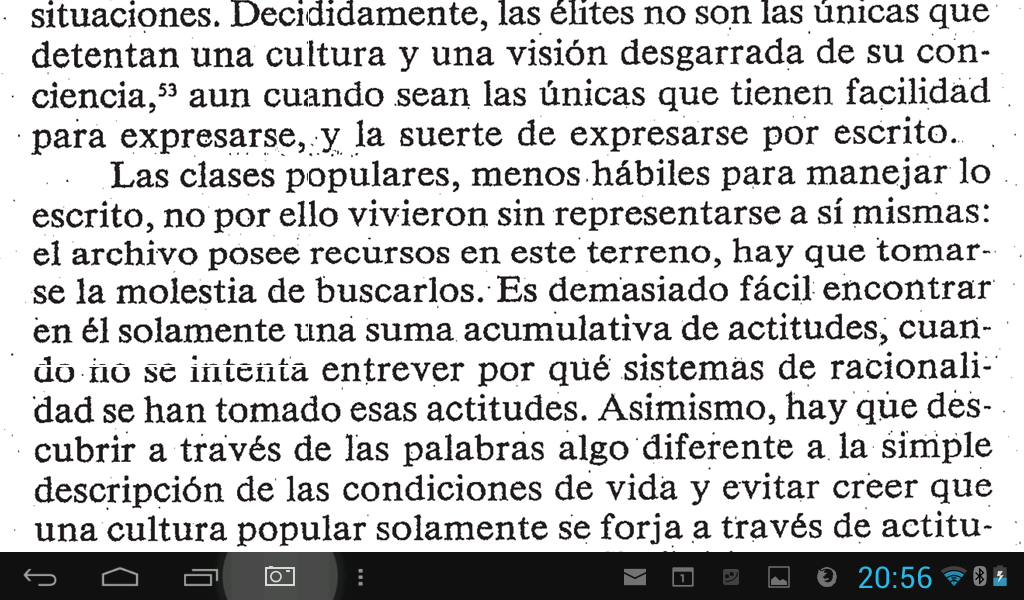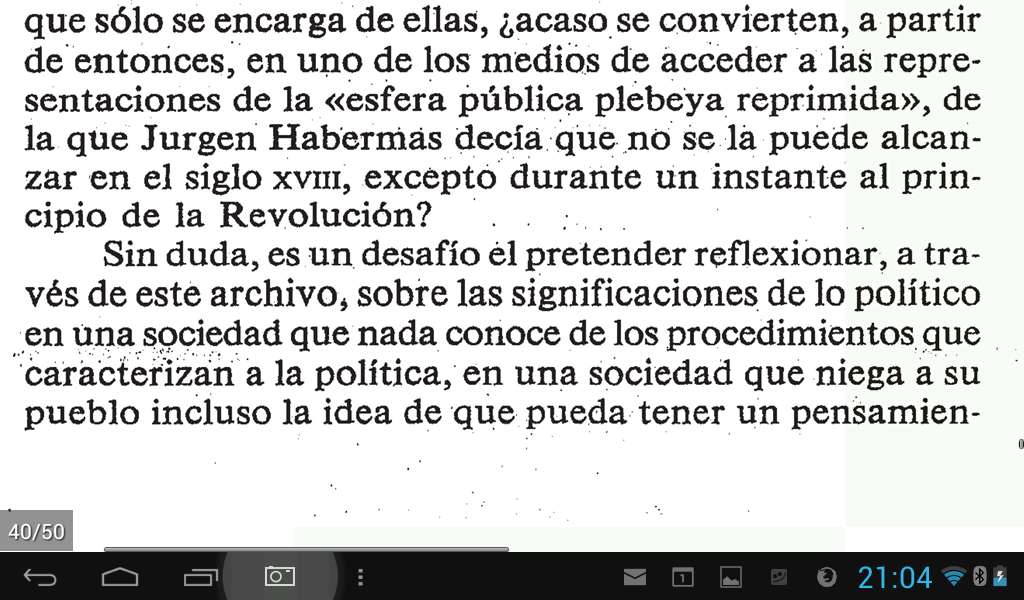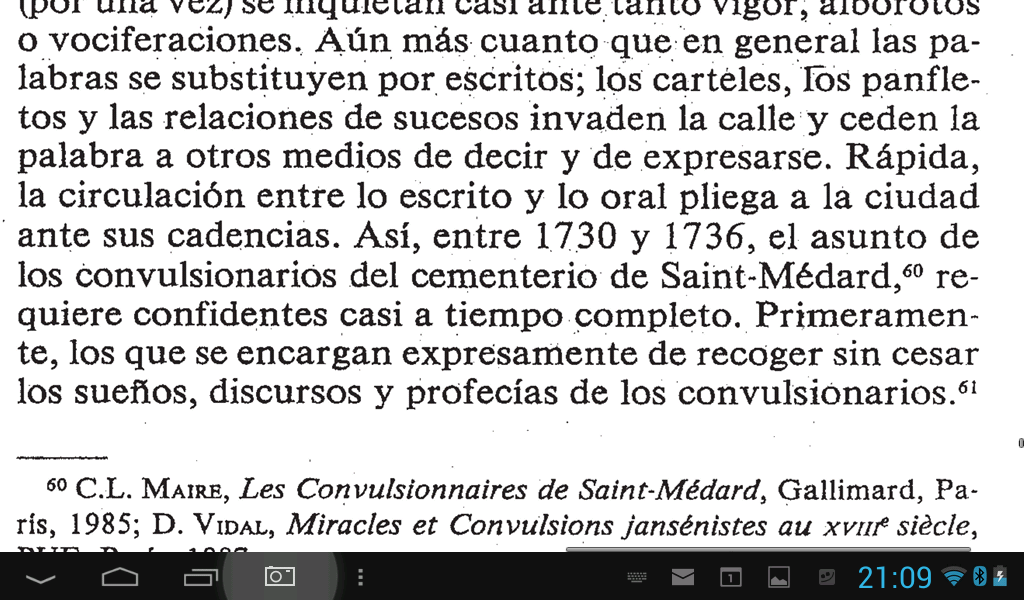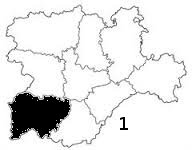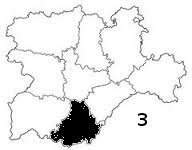9 de 9 fragmentos Arlene Fargette, La Atracción del archivo.
9 de 9 fragmentos Arlene Fargette, La Atracción del Archivo.
9 de 9 fragmentos Arlene Fargette, La Atracción del archivo.
9×9 fragmentos: Arlette Farge, La atracción del archivo.
The Regeneration of ‘Degenerate Art’
The Regeneration of ‘Degenerate Art’ – NYTimes.com http://feedly.com/k/1lOklSe
By FRANCIS X. CLINES
April 24, 2014
Even on the coolest mornings, the long and patient lines of people outside the Neue Galerie, a small gem of a New York museum, have testified to the unintended consequences of Adolf Hitler’s dictatorial tastes in art. “As for the degenerate artists,” the Nazi leader decreed as he rose to power, “I forbid them to force their so-called experiences upon the public.” He targeted them as criminals — modern masters like Otto Dix, Max Beckmann and George Grosz — and obsessively purged them from sight.
Almost eight decades later, the public’s eagerness to view the suppressed art is palpable among those awaiting admission to the Neue Galerie’s exhibition of “Entartete Kunst” — Degenerate Art — a vivid recreation of the fascist times suffered by Germany’s avant-garde artists as they were pilloried and driven to ground during World War II. There is heartbreak flashing about the walls of the show signaled by the empty frames of masterworks that were seized and never reappeared from the war’s ashes; by the stricken self-portrait of a painter driven to suicide; by the proud stare into eternity from another who painted himself as a bold “degenerate” indeed. Art’s triumph is on display as well in some 20 works recovered after the Nazis fell and now free for all to see, as their creators intended.
The exhibition begins with a wall-size photo of Hitler’s crowded, much-publicized 1937 show of condemned art — a pop propaganda stratagem to excoriate Jews and Bolsheviks as cultural aesthetes threatening the nation. The photo of obedient Berliners scowling over the “degenerates” contrasts with another of crowds of Jews in Vienna desperately trying to flee Hitler.
Business is brisk at the museum as throngs — inspired in part by headlines about a cache of 1,200 artworks from the Nazi-era crackdown recently found hidden in Germany and a recent movie about that time, “The Monuments Men” — file in from Fifth Avenue to look back upon extraordinary relics of those apocalyptic days.
“The crowds!” said Carol Goldman, a museum docent, appreciating curious visitors after explaining to a group how truly un-degenerate the art was and will always be. “People are receptive; they are moved.”
One visitor had a question: “If the artists’ works became worthless in Germany, why didn’t Western countries buy them up?”
Ms. Goldman explained there was no easy way to do that, especially with four German art dealers authorized to monopolize the regime’s confiscation policy — a policy that only made modern German art more prized elsewhere, as at the Neue Galerie. “There’s the conundrum,” Ms. Goldman said of Hitler’s mark on the art world.
Recent Acquisition – Records from Martin Harwit, Director, NASM, 1986-1995
Recent Acquisition – Records from Martin Harwit, Director, NASM, 1986-1995
1 The Bigger Picture / by todam / 1 day ago
The Archives recently received a collection of records from former National Air and Space Museum (NASM) Director, Martin Harwit. Formerly an astronomer on the faculty of Cornell University, Harwit was Director of NASM from 1986-1995. Accession 14-100 consists of records created and maintained by Harwit which document plans to exhibit the Enola Gay and the resulting controversy.
The Enola Gay was the Boeing B-29 Superfortress commanded by Colonel Paul W. Tibbets, Jr. that on August 6, 1945 dropped an atomic bomb on Hiroshima, Japan that destroyed 90 percent of the city and instantly killed 80,000 people with tens of thousands more dying later of radiation exposure. This bomb along with another dropped on Nagasaki three days later lead to Japan’s unconditional surrender in World War II.
A script for «The Crossroads: The End of World War II, the Atomic Bomb and the Origins of the Cold War» was released for comment in January 1994. As a result of the feedback the exhibition was retitled «The Last Act: The Atomic Bomb and the End of World War II» and the script underwent several major revisions through January 1995. Each version of the script was met with controversy, particularly from veterans groups and Harwit ultimately resigned as Director on May 2, 1995. Prior to his resignation, Harwit had collected copies of all of NASM’s current and historical documents related to the Enola Gay in order to prepare for his testimony during Congressional hearings on the matter; however, the hearings occurred shortly after his resignation and Harwit was not asked to testify.
On June 28, 1995, a completely different «Enola Gay» exhibition opened to coincide with the 50th anniversary of the end of World War II. The exhibition contained several major components of the Enola Gay including two engines, the vertical stabilizer, an aileron, propellers, and the forward fuselage that contains the bomb bay. Other parts of the exhibition included interviews with the crew before and after the mission to bomb Hiroshima, information about the history and development of the Boeing B-29 fleet used in bombing raids against Japan, and the Smithsonian’s efforts to restore the Enola Gay. The exhibition closed in 1998 and after the Steven F. Udvar-Hazy Center opened the entire aircraft was put on display in 2003.
After his resignation, Harwit continued to collect clippings, journal articles, and television coverage related to the Enola Gay and its exhibition as well as received related materials from veterans groups. He also spoke on the subject in a variety of settings. In 1996, Harwit published the book An Exhibit Denied: Lobbying the History of Enola Gay. A Japanese translation was published in 1997.
Materials in this collection include correspondence and memoranda; exhibition scripts (some annotated); Congressional hearing transcripts; journal articles, preprints, and book reviews; copies of An Exhibit Denied: Lobbying the History of Enola Gay in English and Japanese; Director’s calendars, notes, and Rolodex; chronology of the Enola Gay’s restoration and exhibition; lecture scripts and slide presentations; newspaper clippings and videotaped news stories and television programs; radio interviews with Harwit on audiotape; video elements created during the production of exhibition videos; and related materials. Also included are several compilations of documents related to the Enola Gay that served different purposes
9 de 9
La idea de intervención en los Archivos Históricos Provinciales de Castilla y León tiene como intención principal la revalorización de su importancia, sus funciones y sus características como repositorio histórico y administrativo de la memoria de sus provincias.
Es una riqueza que es difícil poner en contacto con los ciudadanos y que sin embargo sostiene la historia, identidad y red de vínculos de un territorio tan vasto y rico como el de esta autonomía.
Se habla de que no conocer la historia propia es una carencia, pero no conocer bien donde reposa lo es tanto o más, sobretodo en el caso de Castilla y León donde sus historias necesitan del trabajo en red para entender y conocer sus diversos territorios.
La difusión de los contenidos se suele hacer en exposiciones al uso, en paneles explicativos que colman muchas de las necesidades del archivo en su difusión.
Para acercar a este a los archivos y para que valoren sus diferentes dimensiones se propone este trabajo que incluye su intervención en un recorrido de recolección de información en el espacio. Es decir, no sólo se expone si no que lo expuesto, por su formato seriado e impreso, puede ser recogido y coleccionado por el visitante.
Los elementos expuestos recolecctables son publicaciones en formato de periódico que cumplen una doble función: su portadas serán concebidas como un paneles para ver un recorrido expositivo y su interior contendrá toda la información, imágenes y textos que contribuyen a la difusión de la actividad archivística castellano-leonesa y a la de sus principales fondos.
En defintiva exposición y publicación unidas en el recorrido “expositivo” que además el visitante puede llevarse a casa, bien sea como periódico, bien sea como conjunto de láminas, según el sentido que le quiera dar.
Ese periódico expandido en el espacio -de cualquier tipo ya que se adapta tanto al plano de una sala de como a un hall o una sala de lectura- tendrá diferentes niveles.
A día de hoy se pueden preever al menos cuatro:
- Informativo sobre la riqueza del patrimonio de la zona. Un nivel adecuado al visitante, al turista que quiere información sencilla pero bien construida.
- Un nivel más adecuado para la infancia y adolescencia.
- Otro más “docto” y ensayístico.
- Y finalmente uno centrado en la propia historia del quehacer del archivero en Castilla y León y en concreto en los Archivos Históricos Provinciales.
Hirosima.tourism
Foreigners flock to Hiroshima memorial museum in record numbers – The Japan Times http://news.google.com/news/url?sa=t&fd=R&ct2=es_us&usg=AFQjCNGKzrLJ1z_4ClXLEGpaenUL5ZwQ2Q&clid=c3a7d30bb8a4878e06b80cf16b898331&ei=w11OU9DeOcTSmALB_gE&url=http://www.japantimes.co.jp/news/2014/04/16/national/foreigners-flock-to-hiroshima-memorial-museum-in-record-numbers/
Personal Stories, Storage Media, and Veterans History: An Interview with Andrew Cassidy-Amstutz
Personal Stories, Storage Media, and Veterans History: An Interview with Andrew Cassidy-Amstutz
blogs.loc.gov
March 6, 2014 by Trevor Owens
The following is a guest post by Jefferson Bailey, Strategic Initiatives Manager at Metropolitan New York Library Council and co-chair of the National Digital Stewardship Alliance Innovation Working Group.
In the latest installment of the Insights Interviews series, a project of the Innovation Working Group of the National Digital Stewardship Alliance, we talk with Andrew Cassidy-Amstutz, Archivist in the Veteran’s History Project in the American Folklife Center at the Library of Congress. The VHP collects, preserves, and makes available the records of the nation’s veterans.
Jefferson: For readers that don’t know about the Veteran’s History Project, tell us a bit about how it got started, its mission and role within the Library of Congress, and about your responsibilities as an archivist for VHP.
IMG_0038
Andrew Cassidy-Amstutz, Processing Archivist for the Veterans History Project at the Library of Congress, sitting at a Ripstation processing born digital oral history interviews.
Andrew: The legislation creating the VHP was passed unanimously by the United States Congress in 2000 as a way to collect, preserve and make accessible the first-hand experiences of America’s veterans. VHP relies on volunteers, both individuals and organizations, throughout the nation to record, collec, and contribute the stories of veterans in their communities and in their lives. In addition to audio- and video-recorded interviews, VHP accepts memoirs, collections of individual photographs and letters, diaries, maps and other historical documents from World War I through current conflicts. VHP is part of the American Folklife Center within the Library of Congress and is one of the largest oral history collections in the United States.
As the archivist for VHP, my responsibilities are manifold. I am not only responsible for the preservation of the project’s physical collections, but I am also tasked with the management and preservation our digital assets. At the same time, I help to process incoming collections and also provide consultation and reference services with researchers and members of the general public. Finally, I also oversee the growth and development of the project’s internal archives.
Jefferson: You mentioned that one unique aspect of VHP is that the public is able to directly submit both their interviews with veterans and accompanying personal material such as photographs and letters. What challenges does this pose for archivists and collection managers?
Annie Pleasant Interviewing Veteran Peter Young
Amie Pleasant Interviewing Veteran Peter Young
Andrew: One of the most significant challenges associated with the public aspect of VHP is that we rarely know what is going to arrive at the Library on a daily basis whether it is dropped off in-person or delivered through a commercial service. We have received home movie footage, glass audio recordings, collections of hundreds of letters and photographs, multiple types of audio and video carriers and countless other unexpected, but welcome, additions to our collections.
This not only poses a challenge for archivists in anticipating immediate and long-term conservation priorities but also presents the rather unusual challenge of trying to budget for and purchase appropriate quantities of conservation supplies from year to year. I can make broad estimates of approximately how many photographs or audio cassettes will arrive at VHP each fiscal year by observing the way our collections have grown over a specific time period, but due to the unpredictable nature of the collections we receive, it is not unusual for either that estimate to be significantly off near the end of the fiscal year or for something entirely new to arrive in our mailbox.
Jefferson: The VHP FieldKit, which provides guidelines on conducting interviews, also includes a list of accepted media types and formats for audio/video materials. Have these media and format guidelines (PDF) always been in place? Or how have they evolved over the years?
Andrew: VHP’s accepted media types and formats guidelines have evolved over the years to strike a balance between taking advantage of potential opportunities that new technologies offer for recording oral history interviews and ensuring that VHP is accessible to as many people as possible across the country. We are always attempting to stay abreast of current technologies and we actively review our accepted media types and format guidelines on a regular basis.
We have also had to adapt our accepted media types and formats guidelines to take into consideration preservation concerns about specific media types and formats. For example, we no longer accept DAT tapes or microcassettes due to specific preservation concerns such as their fragile nature and limited longevity. We are also taking steps to mitigate potential preservation concerns before they manifest themselves. VHP purchased a Ripstation several years ago and instituted our own Tangible Media Project to capture content on optical discs before we lose access to the data due to either physical damage or any type of corruption.
Oral Histories on Various Media Awaiting Processing
Oral Histories on Various Media Post Processing
Jefferson: In working with such a diverse set of acceptable media and format types, ingest and migration must be essential activities in accessioning and managing the oral history interviews that VHP receives from the public. Tell us about your experiences working with different media (optical, DigiBeta, etc.) and formats as far as failure rates, format craziness and mass content transfers? And how have these impacted submission guidelines over the years?
Andrew: Ingest and migration are absolutely essential to manage the oral history interviews that VHP receives from the public. By the time I started with VHP in the summer of 2012, we had streamlined most of our submission guidelines to take into account preservation considerations and current technological and archival standards. However, we still possessed a large quantity of oral history interviews received over the past decade on optical disc, various tape-based carriers and various cassette-based carriers.
Like many other archival repositories currently dealing with digital preservation, VHP does not have access to all of the equipment required to either access legacy carriers or to create preservation master files on a mass-production scale. To overcome these obstacles, we contract with outside vendors to create preservation master files according to specifications that VHP provides. We determine which collections should be migrated using this workflow based on preservation concerns, available funding, and numerous other practical and technical considerations.
The only opportunity I have to work with large quantities of carriers is when I use VHP’s Ripstation and apply it to our version of the Tangible Media Project. I have been able to capture the content of approximately 4000 optical discs over the past year and I have learned so much in the process. First, I am constantly amazed how much content can be captured from optical discs that are nine or ten years old, if not older, and that have been subjected to hazards ranging from a variety of environmental conditions during their shipment to the Library to the security screening each package receives when it arrives on Capitol Hill. I don’t have specific numbers but the vast majority of the optical discs I have processed have finished our Tangible Media Project workflow successfully and been ingested into a digital preservation server environment.
Jefferson: Has VHP noticed changes in the types of digital storage media that are being submitted?
Andrew: We have definitely observed changes in terms of the preferred carriers over the years. In the beginning of the project, we were receiving large quantities of VHS tapes and audio cassettes. There was such a proliferation of alternate tape-based recording formats (Hi-8, Video-8, Digital-8, VHS-C, S-VHS, Betacam SP, Betacam Oxide, and many others) that many donors stuck with what they were familiar with. As blank CDs and DVDs became not only more widely available but also increasingly trusted for their storage capabilities, we started receiving them in larger and larger quantities. The vast majority of the oral history interviews that we now receive are on DVDs. While this is likely to continue for the next two to three years, donors are beginning to ask about submitting interviews on flash drives, hard drives and via electronic file transfer. We anticipate that this request will become more common as blank CDs and DVDs become harder to locate and with most new computers being manufactured without an optical drive.
Jefferson: Accepting unsolicited materials must also create many challenges as far as verification of the content of the interviews. How does VHP staff go about verifying the the validity of interviews?
Andrew: The Veterans History Project is not tasked with verifying the validity and accuracy of the interviews we receive, and we make no claim as to the veracity of the stories that we care for. Rather, the diverse (and occasionally contradictory) recollections of the individuals within our collections serves to highlight the human experience of service and conflict and how those two themes shape us and contribute to our growth as individuals.
Jefferson: Tell us about unique workflows or processes that VHP has developed over the years in working with public submissions of born-digital content. Does it manage its digital content differently than curatorial units of the LC that have specific appraisal policies? And how do VHP’s digital preservation policies differ (if at all) from those of other units within LC?
Andrew: We do manage our content slightly differently than other curatorial units within the Library of Congress due to our status within the American Folklife Center. Unlike other curatorial units, such as the Manuscript Division, I am responsible for the care and preservation of only one collection rather than hundreds. Even though the Veterans History Project contains the experiences of tens of thousands of veterans, I am able to describe those files at a much more granular level than a traditional archival collection. For example, I can create a specific file name for each veteran during our digital preservation workflow that corresponds to their individual record in our collections database. This is not always possible (or even desirable) when dealing with a collection that might consist of dozens of boxes.
As for our digital preservation policies, they do not differ much from those of other custodial units within the Library of Congress. Recently, we have begun prioritizing the migration of our collections on optical media to servers as part of our digital preservation workflow. I know that this effort is being replicated across the Library as various custodial units find themselves grappling with some of the same problems that the Veterans History Project has encountered, such as unknown failure rates for different brands of optical discs and the susceptibility of the discs to damage from physical sources.
Jefferson: Past interviews on The Signal have talked about projects within LC such as the Tangible Media Project that work across departments on specific media or content types. Tell us about VHP’s involvement with cross-institutional projects and how it collaborates with other departments.
Andrew: As part of the American Folklife Center, we collaborate most heavily with their staff. This can involve anything from sharing knowledge and expertise on digital preservation issues, helping to staff their reading room desk or working together to accept volunteers and interns.
Additionally, we have benefited from the expertise gained by Library staff working on the Tangible Media Project. VHP consulted with several staff members before purchasing a Ripstation and instituting our own Tangible Media Project to handle the tens of thousands of optical discs in our collection. As we gain more experience with our Ripstation and our own Tangible Media Project workflows, we hope to add our new expertise to the pool of individuals currently sharing information and resources about the Ripstation throughout the Library.
Jefferson: Finally, what are some of the emerging issues that VHP will face in the coming years, both related to born-digital submissions, specific media and formats and within the overall field of veterans and oral history?
Andrew: The Veterans History Project will need to tackle many issues in the coming years as we continue to make the project as accessible to as many people as possible across the country. As we work to stay abreast of current and emerging technology we will need to continue to actively review our collection policies and procedures on a regular basis. As part of this review process, we will need to consider and adapt to new ways of capturing and submitting the stories of American veterans. Some of these considerations might include the ability to receive multiple interviews on the same flash drive or portable hard drive, the ability to upload interviews and other files electronically to a publicly accessible server within the Veterans History Project and the ability to accept high definition or even ultra high definition files for inclusion within the project.
Additionally, we are beginning to consider the possibility of accepting interviews from defense contractors who have served in Iraq and Afghanistan since 09/11. We are proceeding very carefully on this issue because, while we are cognizant of the important war-time contributions made by defense contractors and the impact their service had on their lives, we must prioritize maintaining the authenticity of the collections already within our care above expanding our mission. We want to continue to honor and respect the collections we currently have but at the same time want to be open to the current opportunities for service now available to Americans both domestically and internationally.
